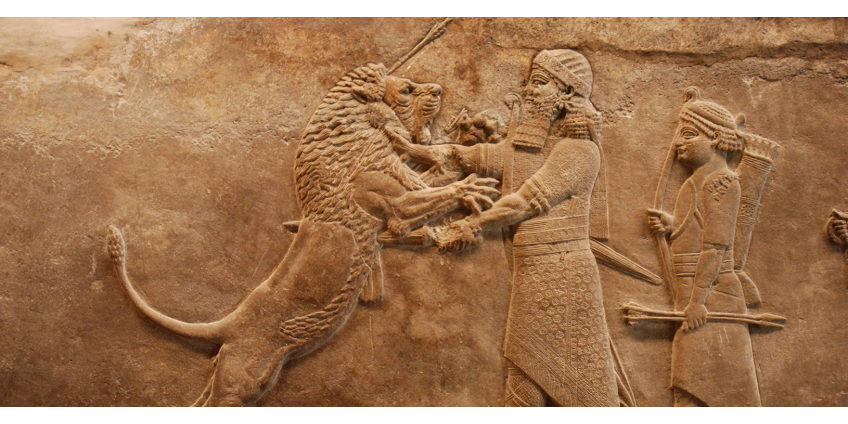
This product is not exportable outside the United States.
By adding this item to cart, you agree and acknowledge the Export Policy and confirm that you are a person in the United States with no intentions to illegally export the device.
This product is not exportable outside the United States.
By adding this item to cart, you agree and acknowledge the Export Policy and confirm that you are a person in the United States with no intentions to illegally export the device.


0

0


It's hard to tell when hunting turned into hunting. It is unlikely that anyone will name a specific date, year, or even century when there was a division between the desperate struggle for survival and the cold-blooded production of meat and skins. If such a division existed, then everything would be too simple. And then we could have born the hope of finding answers to the main questions of the universe. And that would be too easy.
Tracking the history of man's ascent up the evolutionary ladder, you may have an irresistible desire to draw a line that could indicate the moment when humanity was at the top when everything that makes animals was supplanted by humanism, love for one's neighbor, and craving for knowledge. But, you will not find a single moment to find the starting point of this metamorphosis. For the simple reason that we have never left this link - the link of the animal world. We have been and remain predators.
It goes without saying that we are unique predators. Not endowed with sharp teeth, wide wings, deadly claws, the ability to run fast or see at night. All we have is our brain, thanks to which we have won this race.
Ever since man thought that it would be a good idea to take a stone and use it when hunting a saber-toothed tiger, we began to confidently bypass in the evolutionary race those who are bigger, stronger, and more profane than us. This is how we got to the point where we are striving to bring at least a bit of rivalry to stalking deer or shooting ducks.
Yes, we have learned to provide for ourselves, to raise the necessary animals for the sake of meat or skins, but admit, the memory of our ancestors is sewn up in each of us. And, sometimes, somewhere deeply, a call is heard, which makes us not go to buy a turkey for Thanksgiving in the store, but get it ourselves. It is this call that makes us personalize the forest and show respect for the animals we hunt. This inner need to satisfy our primitive urges inclines us to the desire to put our well-being, health, and comfort on the line, to clash with the unrestrained world of wild nature and irrepressible elements.
In this series of articles, we would like to explore this phenomenon - hunting, extreme hunting, where trophies are secondary, and risk and adrenaline are just fuel. We will plunge into the history of hunting and try to understand those people's psychology for whom it has become the meaning of life. And, perhaps, we will find an explanation for what drives us, forcing us to change the comfort and warmth of the house for an overnight stay in a tent and multi-day transitions in any weather.
As mentioned earlier, hunting has always been dictated by necessity. When our ancestors realized that gathering is not very reliable as a food source, and animal meat is much more nutritious and practical, the question arose about getting this meat. This is how hunting appeared.
Actually, this phenomenon is not related to food, no matter how strange it may sound. The obtained animals were used in full. Thanks to them, people received skins, bones, veins - all parts were used. But, the hidden benefits of this activity are not so obvious. Progress. Hunting drove progress, including the progress of tools for everyday life, war, and life.
The primitive and elementary tools that people used to hunt brought their results. Relatively speaking, if at first stones and sticks were used, with which small rodents and birds were taken, then people began to realize all the prospects of these objects that lay under their feet. The following events' logic is simple and clear: if the stick is sharpened from one end, then its effectiveness will increase. The increased efficiency will lead to the ability to kill new, more dangerous species of animals. From the resources harvested from those, you can create even more advanced weaponry and tools.
The process of innovating weapons went on continuously and could not be stopped. At a certain stage, developing a tool for extracting food acquired a certain flavor and featured characteristics of the corresponding region. This tool often met the conditions in which people hunted and thousands of factors that influenced their needs and capabilities.
This is a fascinating and voluminous topic that deserves more than one article and scientific work. But, we will not dwell in detail on the evolution of the culture of tracking and obtaining food and tools of this prey. We will immediately transfer to a later period when humanity has already created the culture and built modern civilization's foundations. During these periods, the trait that divided the hunt into two types begins to appear: for the sake of survival and for pleasure, when hunting turned into a hobby and received, among other things, an exotic manifestation.
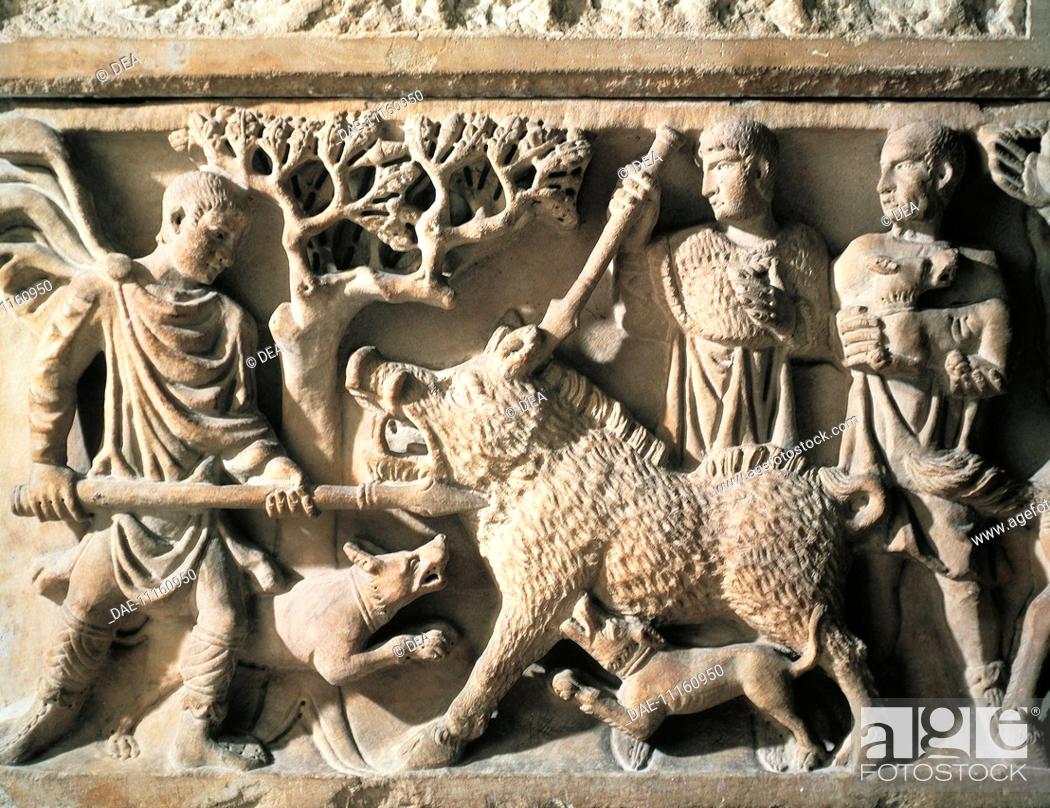
If you happened to visit the modern countries that were part of the Roman Empire, you could not help but admire a great culture's heritage. Giant aqueducts, still operating roads of stunning quality, ruins cities where a modern man would feel relatively comfortable. If you are not impressed by these and many other achievements, you do not have a soul.
On the other hand, looking back at this period impartially, you may have questions. Thousands of questions. And the question - "what is wrong with them?", Will be almost the main one. The cruelty and greed of the Romans are sometimes discouraging. It is incomprehensible how a culture with such a high development level, which created masterpieces in all spheres of activity, allowed such wild and primitive views on life and suffering.
Of course, many wars and clashes on the long road to capture new territory do not accept sentimentality and pity. Studying Ancient Rome's history, sometimes one gets the impression that people of that time received a true, unclouded, and original pleasure from bloody massacres and murders. Of course, the first thing that comes to mind is the gladiatorial fights, which the Romans transformed from the Etruscans' funerary traditions. But, this phenomenon became just a sublimation of those inner foundations and worldview of the ancient civilization, on which the life of those people was based.
Gladiators and bloody battles in amphitheaters became the pinnacle of everyday cruelty, which extended to hunting. Although, in this case, hunting should be taken as a vast concept. And in fairness, it should be taken as any form of interaction with animals, for the simple reason that almost any interaction with animals ended in the animal's death.
This applied to all members of society. Starting from the legionnaires, who, on the campaigns, had no more interesting occupation than the extermination of the fauna of the forests and fields surrounding the camp. And ending with ordinary townspeople inventing very exotic ways to fight predators. So, according to the recollections of eyewitnesses, Carthage's peasants found a very original way to combat predator attacks on villages. They tracked down and killed the lions, after which they crucified them on crosses and installed them on the borders of cities. And if it seemed to you not a bad idea, think twice, because there were hundreds of these crosses ...
The Romans were great connoisseurs of culinary delights. Not so long ago, a real Roman fast food was excavated in Pompeii, and scientists could recover one of the recipes. And it turned out that making a simple duck breast involved a complex procedure and specific ingredients like grape molasses and dandelion puree. And this is just one obvious example. Hedonism in cooking was inherent in ancient people in all manifestations. This also explains the fact that they ate animals of all kinds. Therefore, hunting was the most important and integral part of the life of any citizen.
The empire was huge and included many climatic zones in which hundreds of thousands of animals lived. And, given that any of them could be prepared or used for household needs - the culture of hunting provided for the extermination of any kind. So, the Roman legionnaires destroyed almost all white geese on the Rhine coast during a German campaign. Surprisingly, they did not need so much meat or bird fluff (which was quite valuable). But, the desire to diversify their diet was also not alien to the military. During the same campaigns, a detachment of bear hunters was formed, who only did this and were released from all labor duties. In six months, they managed to kill 50 bears. The thing is that the soldiers were bored, and the hunt was a way to entertain oneself on long stops.
But if you think that people of that time were unnecessarily bloodthirsty and killed for pleasure, you are wrong. Rather, they are right, only half. Because the ability to capture animals alive is simply amazing, it is already surprising that the Romans tamed dogs, which were first used to hunt big game. They were so effective that, over time, they became the most terrible weapon on the battlefield. The dogs were constant companions and reliable weapons in capturing wild animals. And they captured an incredible amount.
And, you know, this is probably the top league of hunting. After all, taking an animal alive is much more difficult than simply killing it and using it as food. It requires the primitive cruelty that the ancient Romans possessed in abundance and amazing tactical thinking and ingenuity.
The extraction of animals acquired a special flavor if the emperor acted as the customer. Especially if the order was intended for long, multi-day gladiatorial games and festivities, for such reasons, the governors of the provinces and conquered countries were given the task of bringing their rarest animals to Rome. And, as you understand, it was not about one or two individuals.
It is unlikely that you can name the animals that were not sent to the capital. Even polar bears were released into the arena of the Colosseum! What can we say about thousands of less exotic representatives of the fauna?
Moreover, the hunt did not end with the formation of caravans. After all, the animals also needed to be fed because one lion requires at least 7 pounds of meat a day. Under such conditions, the caravan passage to Rome turned into a real adventure not only for him but also for the inhabitants of the cities on the route.
All these animals were awaited by vivariums - menageries that surpassed any of the modern zoos in size in the capital. Up to 12 thousand animals could be kept in them at a time! This was such a significant factor that the legislators even adopted several special legislative norms, some of which are still being used by us.
Shockingly, all these vivariums were intended to be destroyed. Wild animals, among which were lions, tigers, and bears, and elephants, hippos, and other representatives of exotic countries, were released into the arena against gladiators. They were starved to death and then set on defenseless people. And they arranged indicative hunting rounds.
The Romans raised hunting as an art. The new methods and unconventional approaches they used in doing so amaze even modern people. Simultaneously, the effectiveness and success - it seems fantastic even to us, the owners of guns, night vision devices, and optical sights. This seems incredible and the terrible cruelty with which the ancient people realized their needs. And, even making allowances for other customs and philosophy, some of their actions cool the blood. Especially realizing how advanced Roman society was.
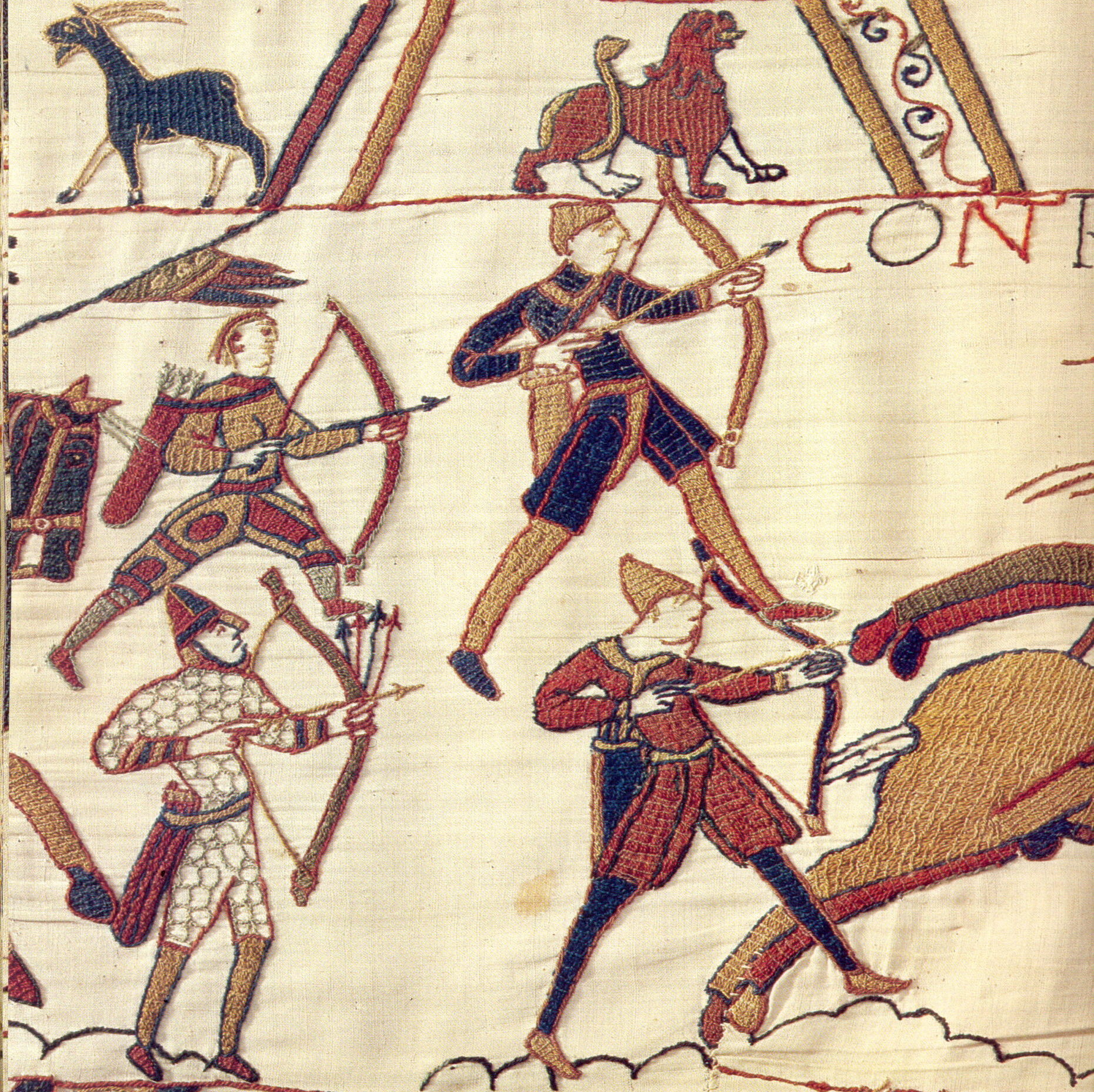
Given our topic, there is no way to get around the culture of the server-side peoples of Europe, who are known to us as Vikings. This amazing civilization still excites the minds of historians. They occupy a huge part of modern culture and are reflected in all its spheres: games, music, films, or literature. The Vikings are steeped in myths and fictions, but, paradoxically, they are mostly true.
Carrying out successful and significant expansions of new lands and actively assimilating in these lands, the northern peoples had as their home the territories of modern Norway, Denmark, and Sweden. These countries are still a very harsh place to live today, to say nothing of many centuries ago. An interesting fact is that the reason for the settlement of these places was hunting. Ancient people moved behind a melting glacier. The reason for this was the migration of reindeer, provoked by this movement. Considering that deer were the main part of ancient people's diet and life, they were forced to follow them even beyond the line of the Arctic Circle.
These lands are harsh and cold places made up of massive forests and cold waters. It was possible to fully exist there only in small areas, usually close to the sea. Agriculture was a challenging and unpromising occupation here, which is why the Vikings were amazed at the natural resources of England during the raids on the island.
Fishing and hunting fed this harsh person in those days. And the ability to get food for yourself was valued here much higher than in a milder climate. This dictated a specific upbringing for children. From early childhood, they were taught to be cruel. Fathers and mothers brought chicks to their children to kill and butcher. Over time, upon reaching six, the young Vikings were handed weapons forged to fit their physical characteristics and age. Cruelty and the need to kill were a prerequisite for survival in harsh places, therefore, despite the amazing cultural characteristics and amazing workability of the people of that time.
When you live in the North, you must use absolutely every opportunity for survival. Therefore, the Vikings did not give up the chances that nature gave them. People of many talents quickly set up a trade. One of the main export products was whalebone and its products. The Vikings hunted whales at sea and collected bones from the discarded fish on the shore. It was a very profitable trade until ivory came to Europe. It was then that the northerners decided to start a trade war, making the volume of the extracted bone their advantage.
This has become a huge problem, the most striking illustration of which was the stagnation of Greenland's settlement. When the Vikings sailed to these lands, they found many walruses, who were not at all afraid of people and were easy prey. When their tusks were found to be a hot commodity, walrus hunting became an exotic and lucrative hunt. But the irrepressibility and the desire to squeeze the most out of Greenland's harsh nature played a cruel joke with the settlers. The scale of the destruction of animals was so significant that they puzzle even modern archaeologists. Traces on the bones of walruses indicate that even young children were killed. And this had the saddest consequences for the fauna and nature of the island.
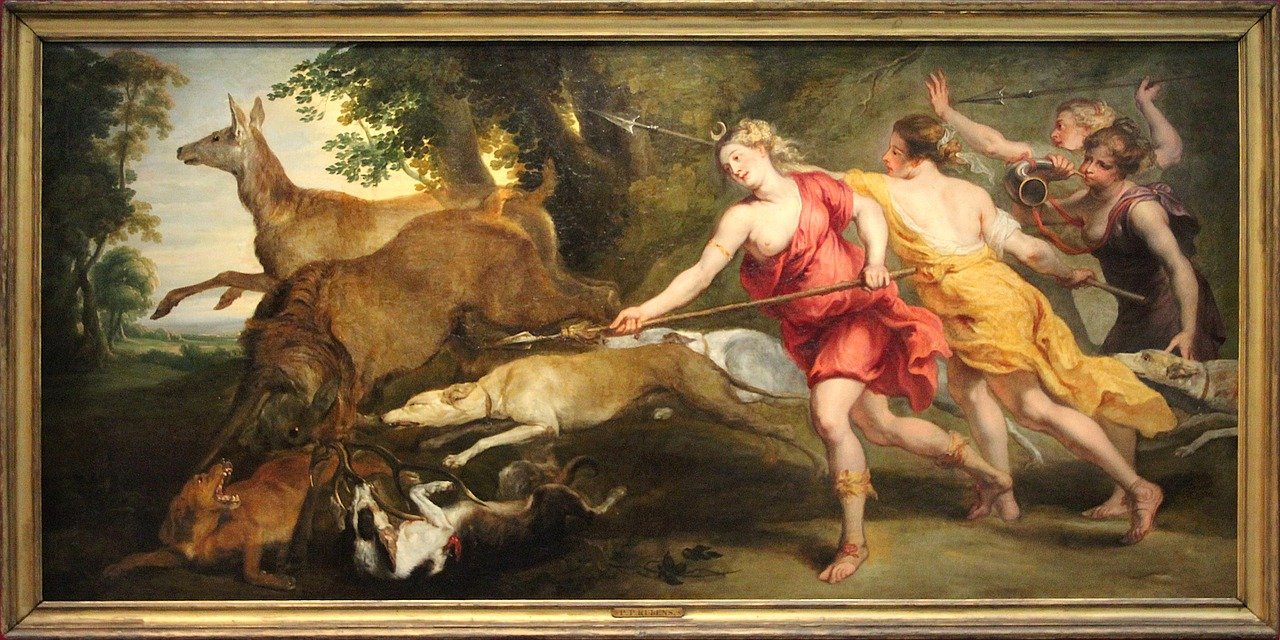
Just like in Rome, in ancient Greece, the role of hunting was incredible. Unlike the Romans, the Greeks were not as bloodthirsty and did not revel in murder to the same degree. At the same time, this occupation was an integral part of culture and education.
“There are many types of hunting for aquatic animals, many types of hunting for birds, and also very many types of hunting for land animals,” wrote Plato, and these words cannot convey all the diversity of this phenomenon. An amazing variety of nature and climatic zones disposed of close interaction with all of its gifts.
Hunting with dogs was especially popular. It was art about which treatises and poems were written. This type of game prey was considered the noblest and worthy. All scientists and thinkers of that time argued that there could be no worthy citizen brought up without the long lessons of tracking and killing animals. It was believed that this activity improves almost everything: the strength of mind, vision, endurance, intelligence, teaches military science and gives youth.
One article or book is not enough to understand all the subtleties and nuances of this lesson as for hunting with dogs. The Greeks' attitude towards him was so reverent and delighted that it turned into an elite hobby, without which it was difficult to imagine a worthy and modern citizen. Many breeds of dogs have been used to hunt different types of games. Debates about technology and breed characteristics were comparable to political debates and often led to fights. These twists and turns were reflected in that time's culture - in theatrical performances, stories about ruined parents, whose children spent all the distance on horses and hunting dogs, were popular.
The dramatic attitude towards the sacred occupation was truly amazing. This was reflected in the disputes between adherents of various types of hunting. For example, the already mentioned Plato called for the prohibition and censure of fishing and hunting on the water. He considered hunting with the help of traps an unworthy occupation. He believed all this to be occupations that did not "improve the soul" in any way, and therefore could not help in the development of a person, especially a young guy. From the philosopher's point of view, what was correct was horse or dog hunting for four-legged animals since it requires strength and endurance and brings up the best qualities in hunters.
The main weapon for the hunting game was the bow. Although the weapon had no sacred meaning, and the Greeks used the tool that was best suited to the situation. Therefore, bows, swords, and spears were also widely used.
Ancient people received special pleasure from tracking. Even killing a hare that was tracked down was considered a worthy deed and was encouraged even by such zealots of tradition as Plato.
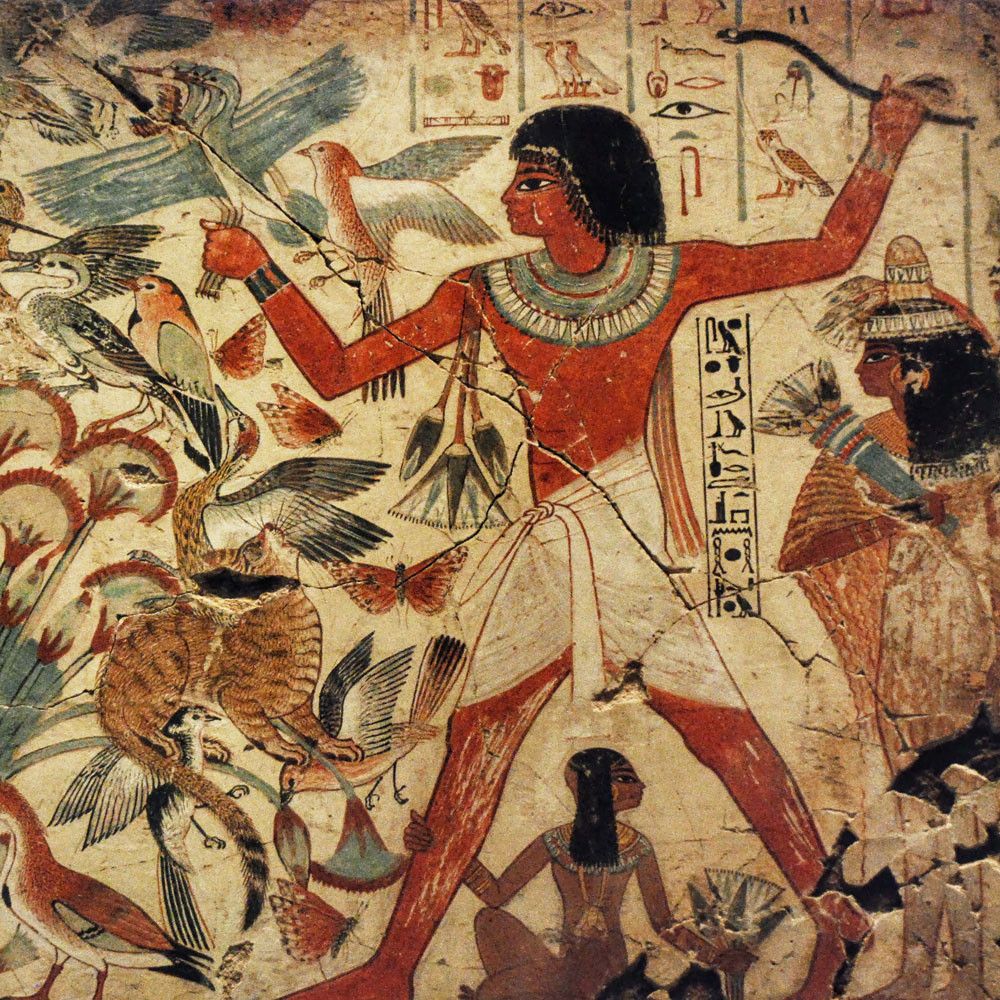
Any hunting in Ancient Egypt will look exotic to us. Although, for this climatic zone, it is all just a matter of survival. The Egyptians, being very sophisticated connoisseurs of traditions and lovers of attributes, turned even everyday things into something from which we still experience surprise.
You need to understand that the state was located in the desert and lived depending on the Nile's floods. Accordingly, animal husbandry and hunting also had their own indescribable features. The main one was that the time for transforming a hunter into a victim is short. When a hunter goes hunting in the desert, he must control a huge number of factors. As soon as he lost this control, he could get lost in the wilderness, dying of dehydration and become supper for hyenas or carnivorous birds.
Therefore, hunting in the desert was a particular occupation engaged either by professionals or noble citizens. A distinctive feature of the ancient culture is that we can observe scenes of their lives in magnificent and informative frescoes, giving an excellent understanding, including hunting.
It is worth noting that the desert had a clear sacred meaning for the Egyptians, and they venerated it throughout their thousands of history. Offerings to the gods Ka and Ra were a worthy and sacred deed. Even the pharaohs created special squads of experienced hunters and soldiers to accompany honey and incense collectors. And at the same time - honey, incense, and oryx were mined. All this was done to honor the times when the people lived only by hunting and gathering, and it was believed that such offerings were especially pleasing to the gods.
As we have already mentioned, the hunters were afraid to get carried away by the process and find themselves face to face in the desert. The tactic was simple and time-tested: knowing the places of watering places, the animals were driven to a prepared location, where they were caught or killed. For such purposes, a deep valley with greenery was usually chosen, at the bottom of which food could be spread, but always with steep slopes so that the victim could not get out. After that, traps were set, and the corral and round-up began.
Dogs have been an important part of the hunting culture. Dogs were highly valued in society and accompanied by their pets on any serious fishing trip. Several breeds of dogs were reliable companions of the hunting Egyptians. They were trained and brought up to know their role perfectly and organically fit into the ancient Egyptian round-up symphony. The Egyptians were excellent specialists in dog training. And this is not surprising because, during the Old Kingdom, they used hyenas in hunting.
The hunt was extremely productive and, according to scientists, became so thanks to the improvement of bows and arrows, darts, and clever, complex traps. The Egyptians treated the process of taking animals with reverence and respect without presenting cruelty as a mandatory attribute of this action. The prey of such raids was often harmless antelopes, ostriches, or small game. What about a truly exotic and dangerous outing?
Places where real, dangerous, and difficult prey awaited the brave lay beyond the Euphrates, where animals lived, which could no longer be found in the Nile Valley. Pharaohs equipped real expeditions to fight with the animals that live in these places. And these were real battles, real war.
The written sources contain many tales of such legendary loot campaigns. So, a caravan of one of the pharaohs met a herd of one hundred and twenty elephants. It's hard to believe this because even one elephant poses a significant danger, not to mention such a huge herd. Still, the pharaoh and his people managed to defeat an unexpected enemy. And the ruler himself defeated the leader of the pack, who, however, almost killed him.
These campaigns are fanned with glory, like military exploits, and they prepared for them no worse. The participants put on the best equipment and took the best weapons with them. The hunted animals were really fierce and dangerous: lions, rhinos, hippos, buffaloes, and, already mentioned, elephants. Based on memoirs and stories, court biographers later composed stories about these events, and artists painted frescoes.
Hunting as an event was a sacred and personal affair for every Egyptian - from a soldier to a pharaoh.
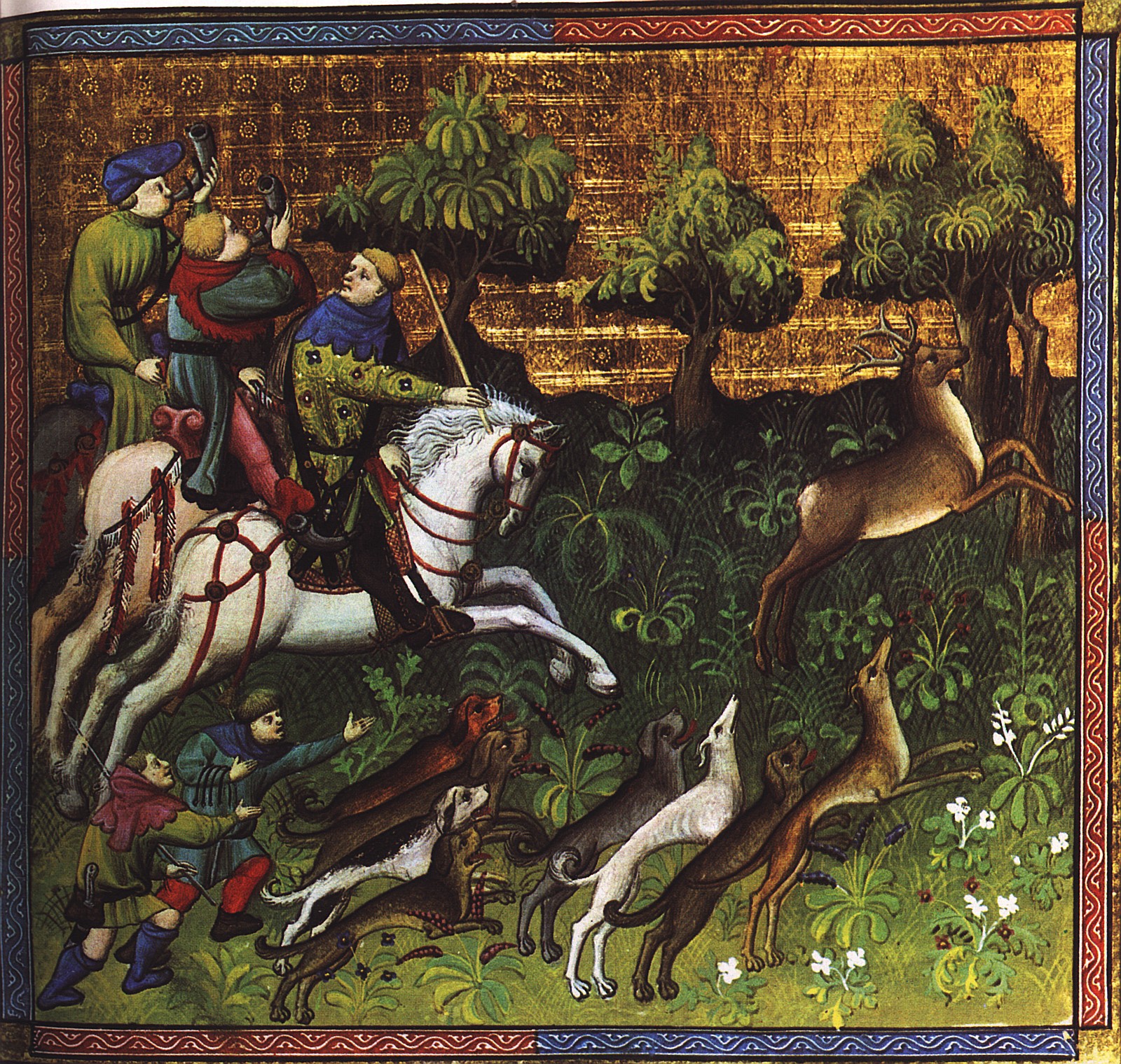
You can build many theories about the role of hunting culture in a particular civilization. But, often, it all boils down to the fact that this activity was the most important way to get food, which means - you live. In any case, this phenomenon is a kind of symbiosis and a manifestation of the people's views and philosophy.
If we talk about Western Europe's countries, then the role of hunting here can hardly be called understated, but it has acquired a certain shade unlike anything else. Given the fertile lands of this part of the world and the priority role of agriculture and cattle breeding, game hunting has become a kind of attribute, a privilege that emphasizes class segregation in society.
Monarchism, which became the main form of government and how strongly the monarchs of Europe were related to each other by kinship, gave rise to similar foundations and rules in different countries. One of the distinguishing features of this form of government was the prescribed ownership of the land and its wealth to the king. Thus, these resources could be used either by him, without any restrictions, or by those to whom he bestowed his mercy.
Provided that hunting was not the basis for filling the diet, hunting became a prescribed procedure with its own rules, codes, and restrictions. Having become an aristocratic occupation, it turned not only into a manifesto of power and unlimited possibilities, it was military training, a holiday, and a hobby, not at all resembling a sacred act in its meaning, but similar to it in its deepest idea.
The territories of the kingdoms were divided according to the level of access. The highest priority was given to the royal forests, which were looked after by the gamekeepers. The peasants and lower classes did not have the right to access these forests and could only hunt small game. Poaching was almost the worst sin of that time. And this class injustice was deeply rooted in the epics and fairy tales of those times.
European hunting is an extraordinary phenomenon. Probably, you can compare it with a football. Every action was prescribed, every step was regulated. Particularly noteworthy is that every detail, every part of an animal's carcass, every action - has been assigned a separate term. Books and recommendations on these procedures took thousands of pages, and any self-respecting aristocrat had to know by heart. This elusive veil of primitive elitism has survived in European culture to this day, and it remains especially relevant for the British elite.
The basic rules and regulations were spelled out by the English and French aristocracy. And many participants appreciated the process in this action, not the result. Bow, spear, knife, and sword - were the main arsenal of the participant. If women took part, then they were given clubs, which they used to kill small game. After the First Crusade, a crossbow appeared in the arsenal, but it was not very popular until the 15th century. Some weapons had special modifications, such as the "boar spear," which, as the name implies, was used to drive boars.
The horn occupied a special place in the hearts of hunters with blue blood. With his help, fast communication was carried out between the detachment members, and everyone had to know the conditioned signals and transmit them quickly. Yes, it was a bit like the quarterback calling audibles on the field.
In addition to weapons and special, fashionable, and pompous clothing, hunters had three more necessaries, the most important attributes: a horse, a dog, and a hawk. It is impossible to imagine any European hunting without them.
The horse was looked after by specially trained people, and the life of these beautiful animals was much better than that of the overwhelming number of subjects of its owner. Not every horse was suitable for hunting. Considering that she had to carry the rider at high speeds amid challenging terrain, maneuvering between trees and snags, she required special skills. For these purposes, special breeds were bred, whose cost could exceed a luxurious estate price.
Dogs were no less loved and important than horses. For them, the same luxurious conditions of detention were allocated to which, without hesitation, most ordinary peasants would agree. A special diet was developed for the dogs, the places for their enclosures were chosen with great care. They were equipped with oak beds on several levels, and at night servants slept with them, who made sure that the dogs did not fight among themselves.
The dog was a versatile hunting weapon. His tasks included tracking and corralling wild animals. They were perfectly trained, and the owners could not imagine the trip without their escort.
Hawks and falcons were a special kind of aristocratic hunter's treasure to describe all the subtleties and nuances of bird selection and training. But, over time, she turned into a real death machine, rushing from heaven. Hawks, more often their females, since they were larger and more suitable for hunting, with proper and careful preparation, were effective not only against the small game but also became a serious weapon against the larger game.
Long and painful training only increased the value of the bird. Imagine the effort it takes to get a wild-winged predator to trust you. They were protected and furnished with spacious and comfortable buildings, usually combined with a stable, far from noise and disturbance. Their trainers were equally appreciated and provided for them and their families. Such specialists were appreciated, cherished, and usually worked until their death, teaching their students as well.
Europe did not have such a variety of animals as in the regions we talked about earlier. But the choice was rather big. A special place in the hunting culture was occupied by deer hunting. There was a special portrait of the ideal victim that the hunter had to get. And every worthy aristocrat was obliged to have such a trophy.
Boars also had a certain infernal and mystical meaning for hunters. This animal, being very aggressive, could easily kill a dog or a person. Especially if the round-up took place during the seating period. Prepared for such raids especially. The perfect end to the process was the killing of a hunted boar with a dagger. To achieve this result, the aristocrats conducted special training and preparation for a military operation. Interestingly, boar hunting in ancient Rome was a completely ordinary event. Simultaneously, in Europe, they were demonized, considered a satanic beast, and attached great importance to torture to defeat this beast.
The destruction of wolves was considered less noble and, rather, a sanitary occupation. It was a noble occupation and often hunted for them, rather for the sake of variety. But, kings and lords kept control over the wolf population. Therefore, in France, elite brigades were organized, whose task was only to destroy these predators. The positive consequences of such activities were a decrease in the number of animal attacks on villages and the extraction of valuable skins. Sometimes even tribute from the conquered territories was appointed in the form of skins.
The hunting interests list was not limited to this and included other types of animals, especially characteristic of a certain territory. For example, it will be difficult not to recall the bear. To challenge this beast was considered the highest manifestation of valor and professionalism. Such raids were especially popular in the Iberian Peninsula.
As you may have noticed, getting psychological satisfaction from the hunting process came to the fore in Europe. But, no one canceled the practical component of this procedure. Fox hunting usually combined these two positive feelings. Firstly, fox skins were widely used in sewing clothes, and secondly, the fox is a cunning and careful predator. And tracking her down is a real challenge, despite her small size. Otters and badgers, as well as other similar animals, were also of some interest to hunters.
Besides, the interests of the hunters were not limited to existing animals. Some church manuscripts contain references to incredible and fantastic animals. Moreover, there were manuscripts with practical guidelines for hunting unicorns. Moreover, they were so detailed that even a modern person would easily believe that the author, at least, saw these fabulous animals in reality.
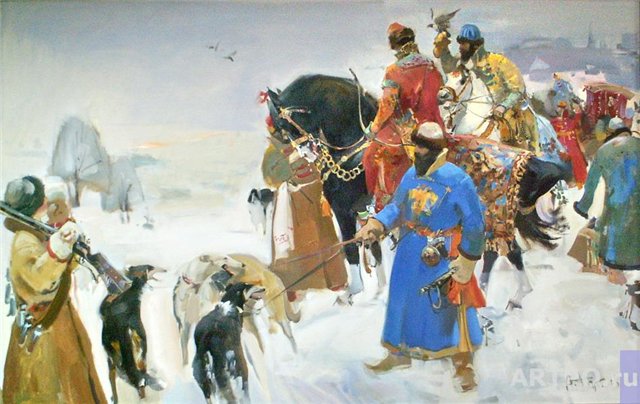
The Carpathians, the Balkans, the territory of Slavic Europe have long and glorious hunting traditions. Unlike Western Europe, there was much less pressure on ordinary people, which made it possible to conduct a more even prey of the animal. The richness of the fauna and the temperate climate created excellent conditions for life and agriculture, which led to the segregation of the regions according to the main activity types. As a result, some villages and districts were exclusively engaged in hunting.
In Russia, however, everything was a little different. The gigantic, richest territory and various climatic zones provided unlimited hunting opportunities. But the authoritarian style of government of local monarchs created a strange symbiosis of the European style of government with Asian features. The rulers here also viewed hunting as a privilege of the aristocracy.
Historical sources contain numerous testimonies of grandiose raids with the mass slaughter of animals. But, unlike France or England, the rulers of Muscovy considered it unworthy to kill animals with their own hands, and the guards and huntsmen did it for them. These events' cruelty and savagery sometimes horrify and makes you remember the most ancient civilizations with their special attitude to life and death.
What is interesting is that such traditions have remained in Russia to this day. For example, during communist times, gamekeepers tied quails to trees so that drunken party leaders could hit them while hunting.
The rich traditions and full-fledged philosophy of hunting and attitudes towards the nature of thousands of tribes that existed in the vast territory of modern Russia were brutally destroyed, and the bloody assimilation of these tribes by the Russians.
What we can say with confidence is that hunting allowed Muscovy to accumulate huge capital. With the development of Siberia, industrial fur production appeared, which became an analog of modern oil.
At this point, we will pause and prepare for further immersion in the incredible world of hunting. An activity that laid the foundation for our cultural code. An interesting journey awaits you, and even we do not know where it will lead. See you in the next part of our research on the origins and history of hunting.
You can find more information here:
Using Drones for Hunting
Ideal set for hunting
In our store
Table of contents